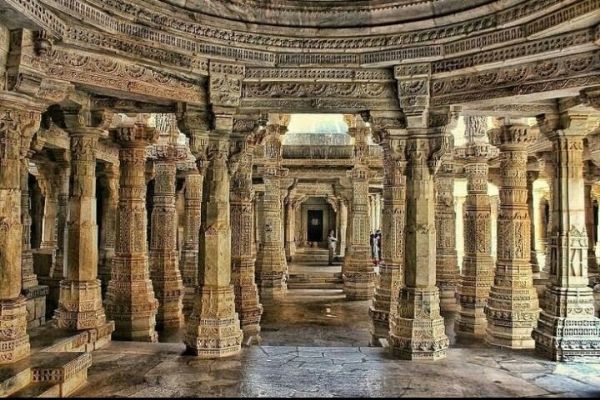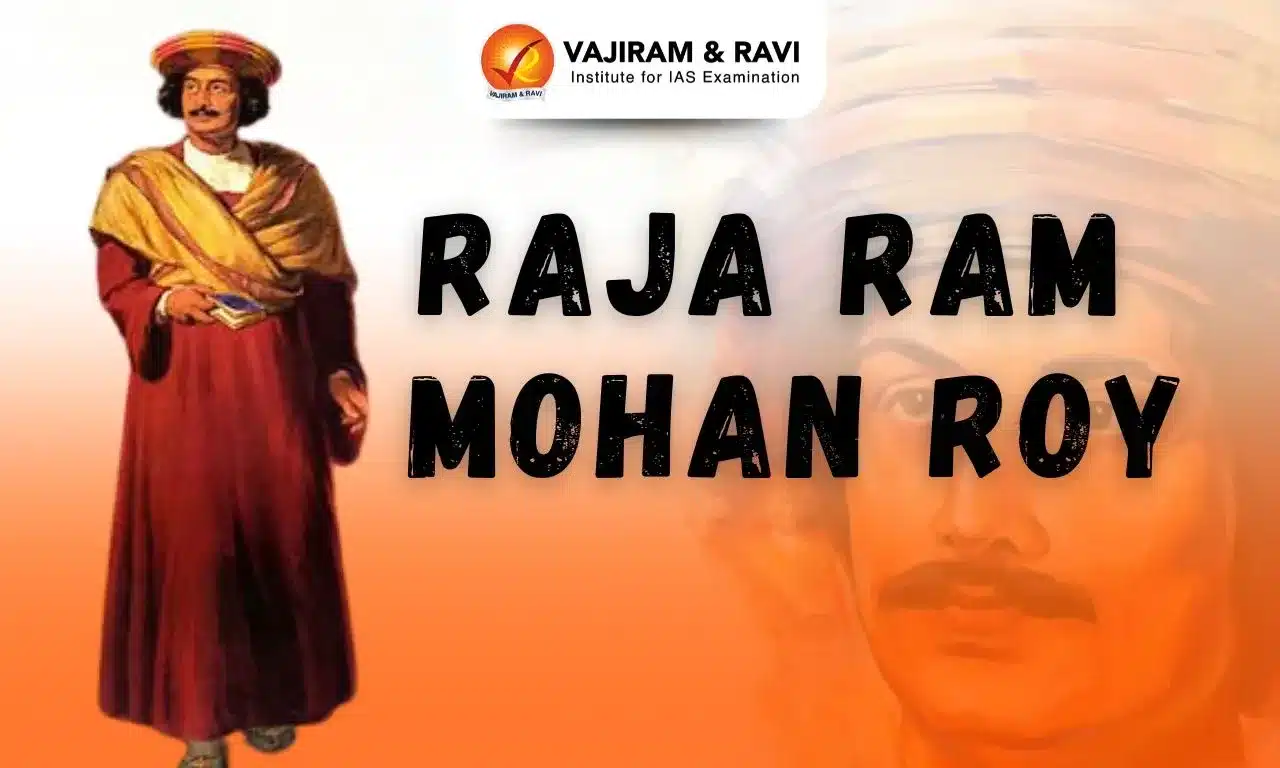Jain Architecture
The elements of Jain architecture are characterized by their simplicity, elegance, and emphasis on symmetry and proportion.
- With regard to architecture, the Jains adopted the local building traditions of Vaishnava and Dravidian styles while evolving their style.
- The exquisite Jain architecture consists of caves, temples, monasteries and other structures.
- In ancient times, they received great patronage under the ruling dynasties of Cholas,Pallavas, Chalukyas, Rashtrakutas and other kingdoms.
Types of Jain architectures
- Stupa (Chaitya)
- Layana (Caves)
- Jinalaya (Temples)
Stupa (Chaitya)
- The Jains erected them for devotional purposes.
- The earliest Jain stupa was built in the 8th century BCE, before the Jina Parsvanatha.
- Structure: Jain stupa has a peculiar cylindrical three-tier structure that is quite reminiscent of the Samavasarana, by which it was replaced as an object of worship.
- As used in Jain inscriptions, the name for a stupa is the standard word “thupe”.
- Mathura Jain Stupas: A Jain stupa dated to the 1st century BCE-1st Kankali Tila moundcentury CE was excavated at Mathura in the 19th century, in the .
- Ayagapatas: The Jain devotional reliefs, called Ayagapatas, show a probable design of the Jain stupa.
- The stupa drum is set on a high platform and accessed by a flight of stairs and an ornate torana gate, quite similar in style to the toranas of Sanchi.
- The drum of the stupa is elongated and cylindrical and formed of three superposed tiers separated by railings and decorated bands.
- The platform may have been squared, with Persepolitan-type columns in each corner.
- On the Vasu Ayagapata, one of the Persepolitan pillars is surmounted by a Dharmachakra wheel, and the other pillar was probably surmounted by an animal, as seen in other similar Ayagapatas.
Layana (Caves)
- Caves, the earlier architecture found in Maharashtra, are of the Digambara Jain sect.
- These are found from the 6th century during the Chalukya period and continued during the Rashtrakuta period.
- Rock-cut architecture: The method of building a structure by cutting it out of raw is known as rock-cut architecture.
- It is done by excavating solid rock where it naturally exists to create structures, buildings, and sculptures.
- Temples, tombs, and caves were the principal rock-cut architecture applications.
| Jain Caves | |
| Caves | Description |
| Ellora Caves (Maharashtra)
|
|
| Udaygiri Caves (Odisha)
|
|
| Sittanavasal Caves (Tamil Nadu)
|
|
Jain caves
Jinalaya (Temples)
Jain temple architecture is a style of temple architecture that developed as a part of Jainism. This ancient Indian religion emphasizes on non-violence and respect for all living things.
- Each element of Jain temples, like Mandapa, Garbhagriha, Mukhmandapa, Shikhar, Devakoshta etc, are designed to create a peaceful and harmonious atmosphere for meditation and worship.
- Some key elements of Jain temple architecture include:
- Jain temples have numerous pillars with a well-designed structure, forming squares.
- The squares thus formed create chambers, which are used as small chapels and contain the image of a deity.
- From these pillars, there are richly carved brackets that emerge at about two-thirds of their height.
- The only architectural variation specific to Jain temples is the frequently seen four-faced or Chaumukh design.
- Types of Jain temples: There are mainly two types of Jain temples: Shikar-bandhi Jain temple and Ghar Jain temple.
| Features | Shikar-bandhi Jain temple | Ghar Jain temple |
| Size of temple | They are more traditional and large temples. | These are smaller, more intimate temples meant to be used as personal shrines within a household. |
| Structural features |
|
These temples do not have a dome and are typically less ornate than Shikar-bandhi temples. |
| Serves as | The central shrine in a Shikar-bandhi temple houses an image of a Tirthankara, and the temple serves as a gathering place for Jain devotees. | They are used for daily prayers and rituals. |
Types of Jain temples
Jain Religious Sites |
|
| Places | Description |
| Dilwara Temple (Rajasthan)
|
|
| Ranakpur temple (Rajasthan)
|
|
| Temples (Gujarat)
|
|
| Mount Mangi Tungi (Maharashtra)
|
|
| Shikharji (Jharkhand)
|
|
| Khajuraho Group of Monuments (Madhya Pradesh)
|
|
Jain religious sites
Paintings
One facet of Jain art is painting, generally known as miniature paintings because most pictures are rendered in small sizes. Jain miniature paintings were developed all over India in the 7th century A.D. and reached maturity during the 15th century A.D.
| Jain Paintings | |
| Mural Paintings
|
|
| Western Indian style of painting
|
|
| Sittanavasal Paintings
|
|
Jain paintings
Jain Sculptural Reliefs
The brilliance of the Jain sculptures can be seen from the delicate images of the Jain Tirthankaras. The sculpture can depict any of the twenty-four Tirthankaras, with images depicting Parshvanatha, Rishabanatha, or Mahavira being more popular.
Mathura School of Sculptures:
This school was developed around Mathura, an important city on the Uttarapatha and the second capital of the Kushanas.
- The images discovered here belong to all three religions: Buddhism, Brahmanism and Jainism.
- These were created using red spotted sandstone, readily available in the nearby Aravalli region.
- Features of Jain sculptures in Mathura school:
- They depict Jina in a seated or standing pose.
- The standing Jina is straight, with hands long enough to reach the knee.
- The seated Jina is in padmasana (lotus position or cross-legged posture) with hands in dhyana mudra. They are generally nude.
- Jaina venerates 24 Tirthankaras who are distinguished by different emblems on their throne or chest: a lion for Mahavira, a bull for Rishabh etc.
- They also donated reliefs to the stupa, known as ayagapatas, in the form of square slabs depicting Jina stupa, swastika, twin fish symbols, various scenes etc.
- Jain sculptures have been recovered from a ruined stupa at Kankali Tila.
- Kankali Tila is a mound located in Mathura.
- Numerous Jain sculptures, Ayagapattas, and pillars were found here during excavations.
Examples of Jain Sculptures
- Lohanipur torso: It is a polished sandstone statue in Patliputra, Bihar, representing a Jain Tirthankara in a damaged state.
- Gopachal rock-cut Jain monuments: located around the walls of Gwalior Fort, Madhya Pradesh.
- They depict Tirthankaras in seated Padmasana posture and Kayotsarga posture in typical naked form.
- Vasantgarh hoard: it is located in Rajasthan; evidence shows a strong foothold of Jainism in this area as 240 Jain bronze idols were discovered.
- Idols of this hoard show images of Tirthankara, sashandevatas (yaksha and yakshi) and Jain deities in Shwetambar iconography.
Last updated on June, 2025
→ UPSC Notification 2025 was released on 22nd January 2025.
→ UPSC Prelims Result 2025 is out now for the CSE held on 25 May 2025.
→ UPSC Prelims Question Paper 2025 and Unofficial Prelims Answer Key 2025 are available now.
→ UPSC Calendar 2026 is released on 15th May, 2025.
→ The UPSC Vacancy 2025 were released 1129, out of which 979 were for UPSC CSE and remaining 150 are for UPSC IFoS.
→ UPSC Mains 2025 will be conducted on 22nd August 2025.
→ UPSC Prelims 2026 will be conducted on 24th May, 2026 & UPSC Mains 2026 will be conducted on 21st August 2026.
→ The UPSC Selection Process is of 3 stages-Prelims, Mains and Interview.
→ UPSC Result 2024 is released with latest UPSC Marksheet 2024. Check Now!
→ UPSC Toppers List 2024 is released now. Shakti Dubey is UPSC AIR 1 2024 Topper.
→ Also check Best IAS Coaching in Delhi
Jain Art and Architecture FAQs
Q1. What is the Maru-Gurjara style of temple architecture?+
Q2. What is the fresco-secco technique? +






















